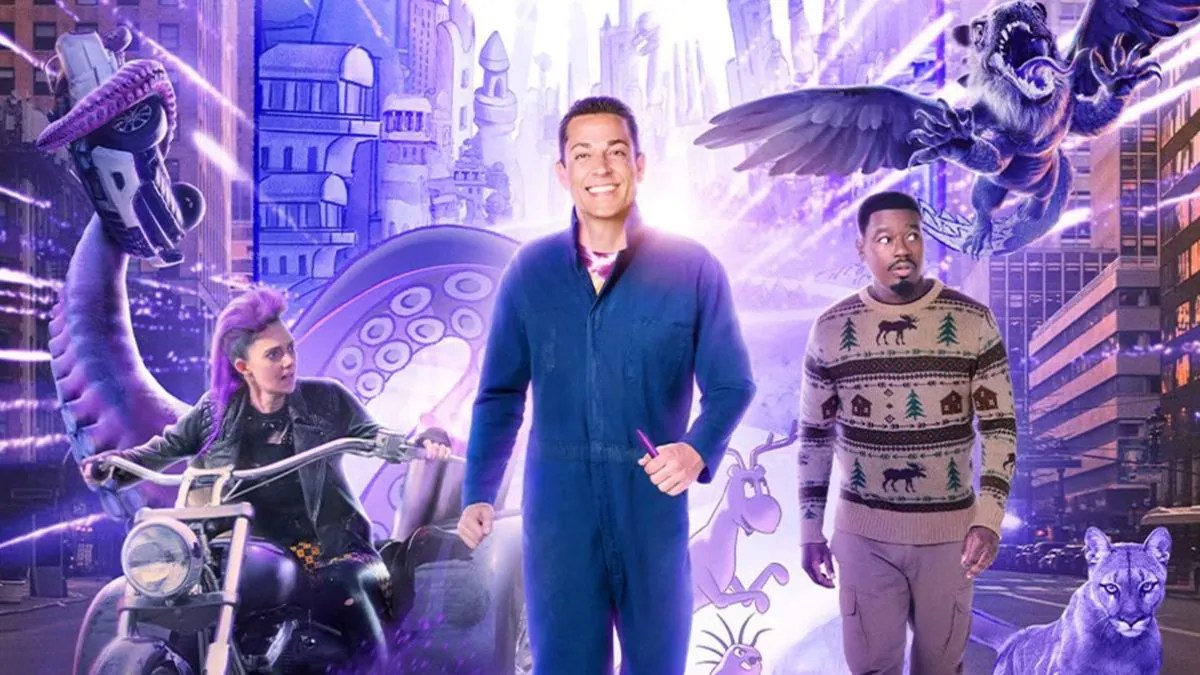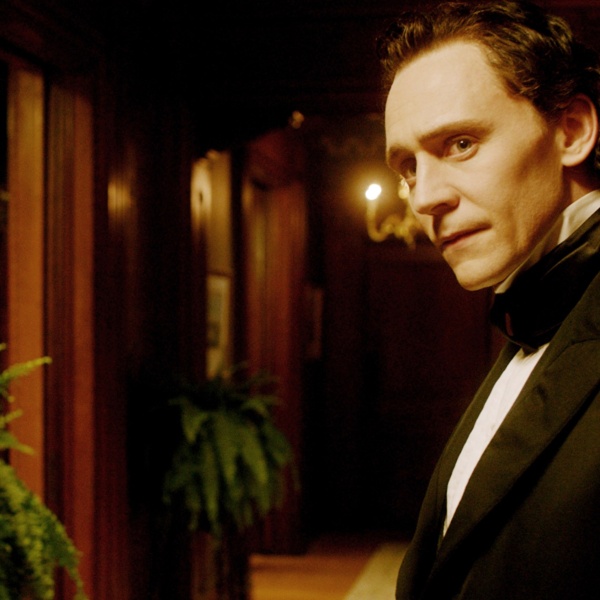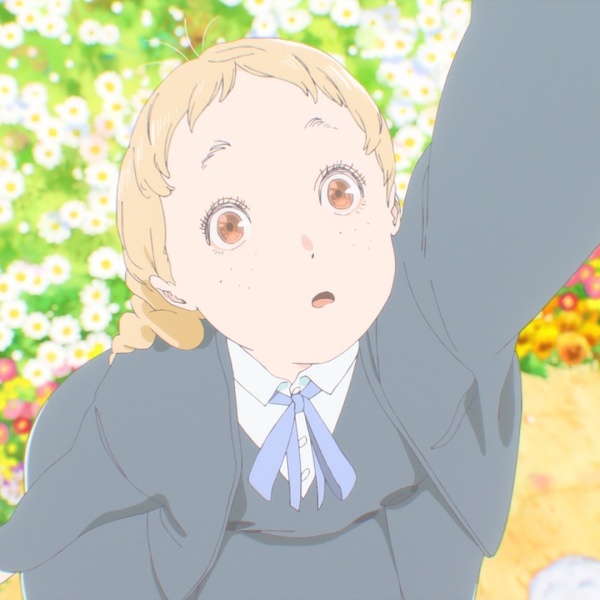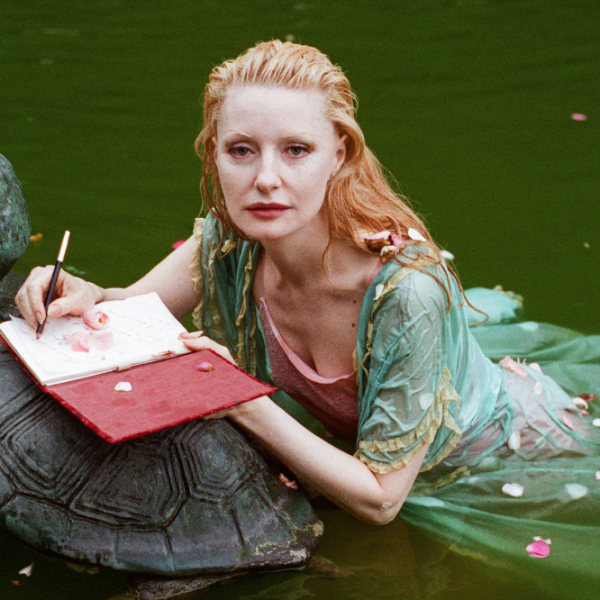It’s very easy to understand why kids might love a picture book about a curious four-year-old whose purple crayon gives him the power to create anything he can think to draw. On the other hand, it’s virtually impossible to understand why kids might enjoy a meta, live-action movie continuation of Crockett Johnson’s classic story, in which the wee hero — now a swole 43-year-old manboy played by Zachary Levi — escapes into the real world as part of a “Barbie”-like quest to meet his creator, and in the process fights to protect a worn-down widow (Zooey Deschanel) from the romantic overtures of a creatively frustrated librarian (Jemaine Clement). Nothing delights young children like an existential journey through the suburbs of Providence!
I’m all for a little postmodern self-reflexivity in a blockbuster cinema that’s otherwise bereft of big ideas, but it’s depressing that even something like “Harold and the Purple Crayon” would rather be a hollow monument to its IP than an effective reminder of why it’s endured for so long. Amused as I was to watch a kids movie in which Zachary Levi, of all people, discovers that his God is dead (spoiler alert: Johnson died in 1975), I struggle to believe that my own children would get the same kick out of such a thoroughly unmagical adaptation.
Things might have been different had Carlos Saldanha’s film displayed any trace of the imagination that it supposedly exists to celebrate, but what you see is what you get with this misbegotten project, which looks and feels like a grown-up’s idea of how kids think. “Harold and the Purple Crayon” delivers all the fun of watching a terminally logical adult play “Scribblenauts” for 90 minutes, as the title character — despite being endowed with the limitless ability to invent matter out of thin air — almost exclusively uses his magical Crayola to create weird animals and wacky vehicles.
Feel the wonder as Harold draws a purple tire for Deschanel’s Terry after she has a flat! Awe with astonishment at the scene where Harold creates a plane so that he can better search for his “old man” (part of a complicated and semi-amusing bit typical of a screenplay that fares better when appealing to parents than kids). Shriek in horror when Terry’s son Mel (Benjamin Bottani) uses the crayon to create a genuinely terrifying spider-fly! Imagine if Grimace had been in the telepod with Seth Brundle and you’ll have a decent preview of your kid’s next few nightmares.
David Guion and Michael Handelman’s script is inclined towards the Cronenbergian in more ways than one, but — for obvious reasons — “Harold and the Purple Crayon” can’t accommodate the reality that a fatherless and frequently bullied kid like Mel would probably make it about two seconds before using the crayon to resurrect his dad. Satisfied with an occasional gesture towards the idea that Harold and Mel are both in search of absent father figures they can never hope to find (the bond between them is never as clear as it would have to be in order to carry this movie), the movie distracts from the self-imposed sadness of its story by padding it out with all sorts of uninspired nonsense. Did Harold just draw a time machine, because this random skateboarding montage set to Apollo 440s “Stop the Rock” is taking me back.
“Sex Education” breakout Tanya Reynolds bears the worst of it in the part of Harold’s animal friend Porcupine, an impish porcupine who transforms into a vaguely malevolent human when the gang enters the real world; she spends the first half of the movie antagonizing strangers and tracking Harold’s scent, and she spends the second half of the movie doing I’m not sure what. Lil Rel Howery, effortlessly funny in most of his other films, gets an equally raw deal as Moose, the Sancho Panza to Harold’s Don Quixote. Howery has the thankless task of laughing at everything Levi says, an insurmountable acting challenge made that much harder by the fact that Levi delivers all of his lines with the same bug-eyed enthusiasm of a kid in a toy commercial.
Levi, whose very strange career finds him alternating between faith-based dramas where he plays devout Christians and glossy studio movies where he plays little boys trapped in the bodies of adult men, is as irksome here as he was charming in the first “Shazam!” Watching him play five years younger despite being five years older feels like staring at a dolly zoom for the length of an entire movie, a sensation that’s every bit as queasy as it sounds. It’s similarly weird to see Deschanel play the same part that she did in “Elf” but what modern woman doesn’t feel like all the men she meets are just overgrown children?
Mercifully, it’s never suggested that she and Harold might get together, much as Mel might be in the market for a new dad. Gary the librarian has a monopoly on this movie’s romantic overtures (he’s written Terry into the erotic fantasy novel that he reads to kids during storytime), and his incel-like bitterness inevitably gets the better of him when he gets ahold of Harold’s crayon. Clement handles the comic villainy with low-key aplomb, keeping the threat Gary presents at just the right temperature, but his character proves emblematic of the movie’s failures.
While his magic-powered transformation is no different than Ursula’s in the third act of “The Little Mermaid,” or Susan Sarandon’s at the end of “Enchanted,” Saldanha and co. can only think to illustrate it in the visual language of contemporary superhero films, with the final fight between Gary and Harold being almost indistinguishable from the climax of an early chapter in the MCU. It’s dull and low-energy stuff to begin with, but that a story premised on the infinite potential of a child’s imagination should end by cribbing from the most creatively bankrupt stuff of modern cinema is a perfect microcosm of how far “Harold and the Purple Crayon” misses the mark. Saldanha and his writers had the entire world at their disposal, and they ended up drawing a total blank.
Grade: C-
Sony will release “Harold and the Purple Crayon” in theaters onFriday, August 2.






